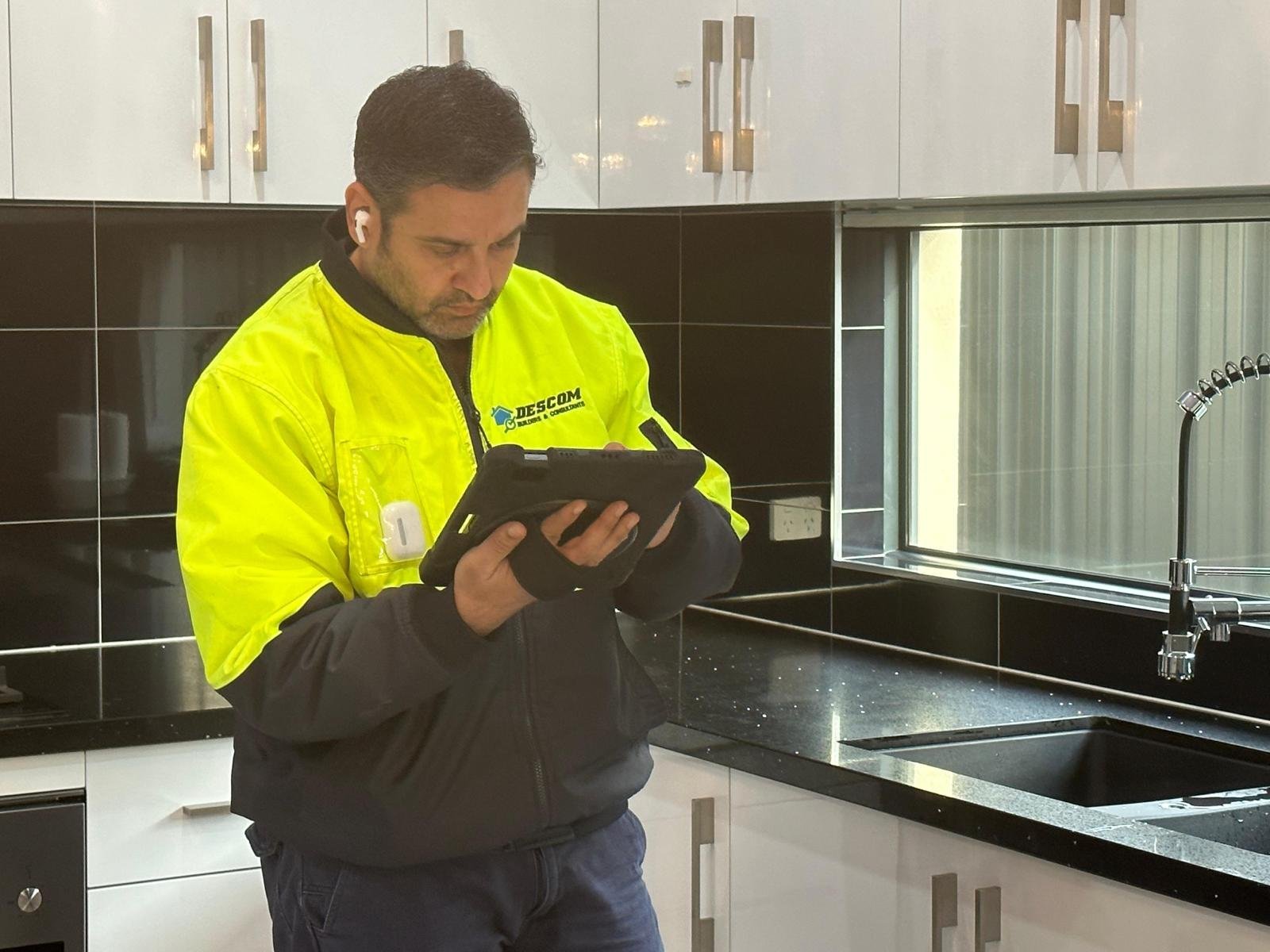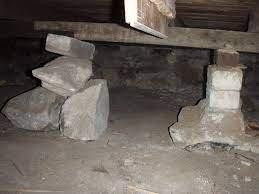Building and Pest Inspection Perth
Termite Inspections Included
How much does a Building Inspection cost in Perth?
FREE Instant Quote
Our Recent Reviews
Loved by the Local Community in Perth WA
Looking for Trusted Building Inspector in Perth?
At Descom, we specialise in thorough building and termite inspections in Perth, ensuring your property is safe, secure, and free from hidden issues.
Our experienced team conducts comprehensive building inspections, identifying structural defects, timber pest infestations, and other potential hazards as per Australian Standards.
( AS 4349.1, AS 4349.3, WA Standards & Tolerances, NCC Volume 2 )
We provide the insights you need to make confident decisions through our easy-to-read building inspection report.
Whether you're buying a new home or addressing structural concerns, our reliable building and termite inspection services in Perth are designed to meet your needs and give you peace of mind.
Why Choose a Local Business?
What's involved?
We offer a variety of packages at competitive prices, including termite inspections, to meet your needs. The inspection process begins with one of our qualified inspectors visiting the property to check all accessible areas for potential issues or damage.
Detailed Building Inspection Report
Delivered the Same Day!

Easy Steps to Get Your Property Inspected
-

-

Inspection Day
Once your booking is confirmed, our inspector will thoroughly examine your property to identify any issues, safety hazards, or non-compliance. A detailed report will be generated based on the findings.
-

Same Day Report
You’ll receive a comprehensive, easy-to-understand Building Inspection Report with all findings and recommendations on the same day of inspection.
Who Needs a Building & Pest Inspection?
🏡 Homebuyers
Before purchasing a home, a Pre-Purchase Building and Pest Inspection ensures you're making a safe and sound investment. It helps you avoid unexpected repair costs and gives you the confidence to proceed with the purchase.
🏠 Homeowners
Regular home inspections help detect small issues before they become expensive problems. It protects your property's value and ensures your family's safety.
🔑 Sellers & Real Estate Agents
If you're selling a property, an inspection lets you identify and fix defects before listing. This builds buyer confidence and can lead to faster sales at better prices.
🏗 Builders & Renovators
New constructions or renovations should be checked for compliance with building standards. This helps ensure quality work and prevents costly post-construction fixes.
💼 Investors & Landlords
A well-maintained property attracts better tenants and higher rent. Property Inspections help investors avoid liabilities and keep rental properties in top condition.
Why Building and Pest Inspection is Important in Perth?
Building and pest inspections are essential for property buyers, homeowners, and investors in Perth. With Western Australia's unique climate and building conditions, structural issues and pest infestations can pose significant risks. A professional inspection helps identify potential defects and hidden problems before they become costly repairs.
Common Issues Found in Perth Properties
Termite Infestation – Perth’s warm climate makes homes vulnerable to termites, which can seriously damage timber structures.
Moisture and Water Damage – Leaks from roofs, plumbing, or poor drainage can cause mold, rot, and attract pests.
Foundation Cracks and Subsidence – Soil movement, especially in clay-heavy areas, can lead to cracks and uneven settling, weakening the structure.
Roofing Problems – Broken tiles, rusted metal, and poor sealing can cause leaks and costly repairs.
Electrical and Plumbing Issues – Outdated wiring, faulty installations, and plumbing leaks can pose safety hazards.
Timber Rot and Decay – High humidity can cause wood to weaken, especially in subfloors and roof spaces.
Poor Renovations – Some homes have low-quality or unapproved renovations that don’t meet Australian building standards.
Other Pest Infestations – Rodents, ants, and cockroaches are common in Perth homes and can cause damage or health risks.
Why Choose Us?
-
With over 20 years in the construction and inspection industry, we adhere to Australian Standards 4349. Our licensed team ensures thorough, professional reports, offering peace of mind.
-
A fully registered inspection service, ensuring trust and reliability.
-
Found a better price? We’ll beat it to provide unbeatable value.
-
Our civil engineers bring specialized knowledge to assess structural integrity.
-
Get a comprehensive report with findings and photographs on the same day as the inspection.
-
We’re licensed and insured for your protection and peace of mind.
-
We’ll coordinate directly with your real estate agent, saving you time.
-
Two decades of expertise ensure reliable and knowledgeable inspections.
-
We uphold the highest industry standards and practices.
-
Attend the inspection and get an immediate verbal report for clarity.
-
We’re available after the inspection to answer questions and provide advice.
FREQUENTLY ASKED QUESTIONS
-
A building and pest inspection is a detailed evaluation of a property's structural integrity and pest activity (like termites). It’s crucial to identify hidden issues that could lead to costly repairs, especially when buying or selling a property in Perth’s unique environment.
-
Perth building inspectors generally charge anywhere between $220 - $800. The cost of an inspection depends on the property size and type. At Descom Consultant, we offer competitive rates for local building inspections and provide upfront quotes to help you budget.
-
Our inspections typically take 1-2 hours, depending on the size and condition of the property. You’ll receive a detailed report on the same day or within 24 hours.
-
Absolutely! We encourage clients to attend the inspection. It provides an opportunity to discuss findings in real-time, ask questions, and gain valuable insights into the property's condition.
-
Our detailed reports include:
Clear summaries of issues found (e.g., cracks, leaks, pests).
Photos and recommendations for repairs.
Easy-to-understand breakdowns of the property’s condition.
This gives you the confidence to make informed decisions.
-
While not legally required, a building inspection is highly recommended for buyers, sellers, and homeowners in Perth to ensure the property is safe, compliant, and free from hidden issues like termites.
-
Our building inspections in Perth include:
Structural integrity (walls, ceilings, floors, and foundations).
Roof and gutter condition.
Safety hazards like cracks or water damage.
Any visible signs of termite or pest activity.
And much more depending upon the package
-
Yes, it’s highly recommended. Our team is fully certified & registered. Perth’s climate makes properties vulnerable to termites and other pests. Combining both inspections ensures no hidden issues are overlooked.
-
Yes, we are fully licensed and insured. At Descom Consultant, our team consists of experienced registered building inspectors who understand Perth's unique construction challenges.
-
The most common issues we find in Perth properties include:
Termite activity or damage.
Cracked walls or foundations.
Roof leaks and damaged gutters.
Poor drainage or water damage.
-
A building inspection helps you avoid costly surprises by identifying structural issues, termite damage, or potential repair needs before you buy or sell a property. Investing in an inspection today could save you thousands in the future.
-
At Descom, we’re a trusted local business with years of experience inspecting Perth homes. We combine thorough inspections, fast reporting, and competitive pricing, all while prioritizing customer satisfaction.





































